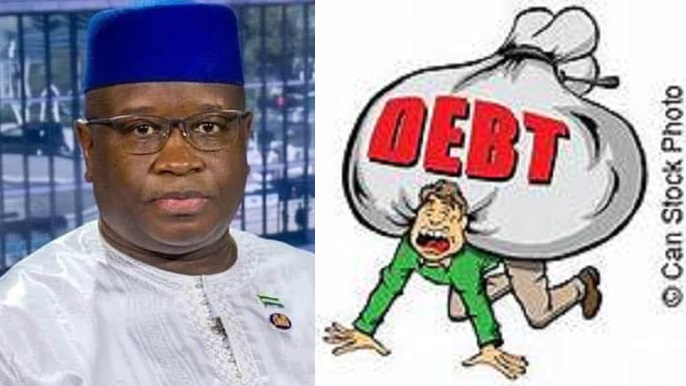The total money borrowed by the government of Sierra Leone from other country’s governments and foreign private lenders with its interest now stands at one billion, eighty-nine million unites states dollars ($1.89 Billion) according to the latest figures from the Ministry of Finance.
World Bank and the International Monetary Fund (IMF) says Sierra Leone is listed among the 34 heavily indebted African countries. Payments of debts including amortization, accounted for 37 percent of domestic revenue and 20 percent of total expenditures at the end of June 2022.
According to the Director of the Public Debt Management Division at the Ministry of Finance, Matthew Sandy, the recent shock from CoVID-19 in 2021 and the Russian-Ukraine war also added increased fiscal pressures on domestic revenues. However, he said that the total external debt stock declined from US$2.02 billion in 2021 to US$1.89 billion in 2022 on account of higher principal repayment supported by grant disbursement.
“The recent depreciation of the local currency affected the overall debt to GDP indicator in 2022, with total debt service payments for both domestic and external debt increaseing from NLe2.251 million in 2021 to NLe2.76 million in 2022.
“The increase is attributed to the cost of servicing previously contracted stock of public debt and the repayment of maturing treasury bonds issued in prior years to settle domestic suppliers’ and contractors’ arrears,” he said.
In the same vein, the country’s lending rates has increased from 28.0 percent in December 2022 to 28.29 per cent as of 4th May 2023.
Sandy, speaking at a Budget Advocacy Network (BAN) Media Training, explained that the interest rate trend from 2018 to 2022 was influenced by excess liquidity and decreased borrowing from the securities market. This led to oversubscription in the securities market, which ultimately resulted in a collapse of interest rates.




 3 Comments
3 Comments










When President Kabba handed over a healthy economy to Ernest in 2007, the country was able to hit 2 digits growth, again, this growth could not be sustained by Ernests maladministration that resulted in the country not been able to properly handle its economy, thus the current predicament of Sierra Leone’s economy today. Bad and unaccountable leadership is plaguing our nation, the common man struggles to maintain one meal per day.
The incompetence and systemic corruption, 156 overseas trips are the factors that influence the SLPP government for not being able to stabilize the economy, including also but not limited to blotting of the minimum wage.
Alpha Kharmoh,dig your history well before you say.Can you tell the public how was our economy when Kabba handed power to EBK?